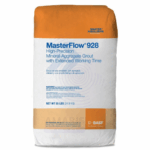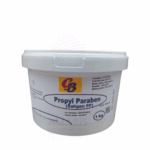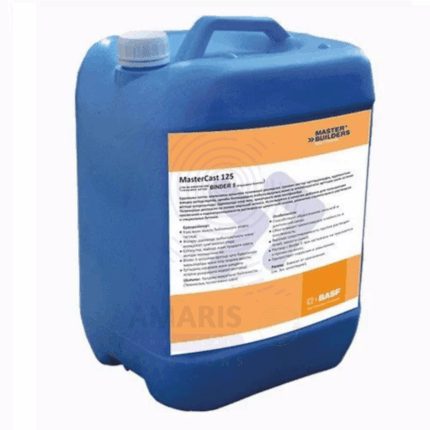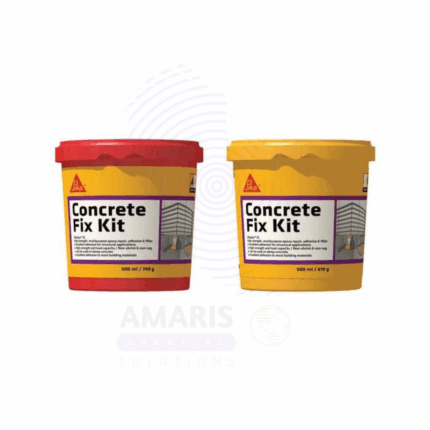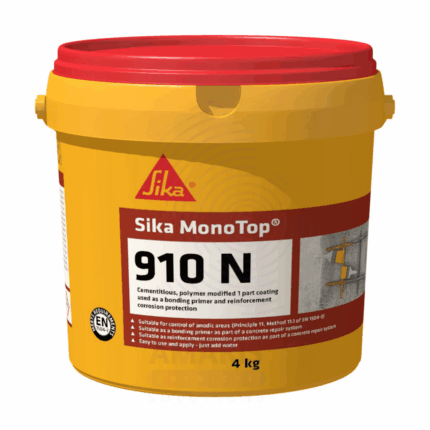Master Inject
Whatsapp Order
Master Inject is a premium chemical grout designed for sealing, stabilizing, and strengthening concrete and masonry structures. It is a low-viscosity, high-penetration injection resin that fills cracks, voids, and cavities effectively, preventing water ingress and improving structural integrity. Master Inject is commonly used in construction repair, waterproofing, and foundation strengthening applications. Its fast-curing formula allows for rapid project completion with durable, long-lasting results.
Description
Table of Contents
Toggle
Master Inject
Primary Uses
- Crack Injection
Seals cracks in concrete and masonry to restore structural integrity and prevent water leakage. - Void Filling
Fills voids and cavities in concrete structures, soil, and rock for stabilization. - Waterproofing
Acts as a barrier against water penetration in basements, tunnels, and retaining walls. - Foundation Repair
Strengthens foundations by filling gaps and consolidating loose soil.
Secondary Uses
- Soil Stabilization
Used to improve soil bearing capacity and reduce permeability around construction sites. - Underpinning
Supports and strengthens existing foundations during repair or modification work. - Infrastructure Maintenance
Applied in repair of bridges, dams, and tunnels for enhanced durability.
KEY PRODUCT FEATURES
1. Basic Identification Attributes
- Chemical Name (IUPAC): Polyurethane or epoxy-based injection resin (depending on formulation)
- Common/Trade Name: Master Inject
- CAS Number: Not applicable (commercial product)
- HS Code: 3907.30.00 (Polyurethanes) or 3907.91.00 (Epoxy resins)
- Synonyms: Injection grout; chemical grout; crack injection resin
2. Physical & Chemical Properties
- Physical State: Liquid
- Color & Odor: Clear to amber; mild chemical odor
- Viscosity: Low, suitable for deep penetration
- Solubility: Insoluble in water; soluble in specific solvents depending on type
- Density: Approximately 1.0–1.2 g/cm³
- Curing Time: Rapid curing within minutes to hours, depending on temperature and formulation
3. Safety & Hazard Attributes
- GHS Classification: May cause skin and eye irritation; respiratory sensitizer (depending on type)
- Toxicity: Handle with care; may cause allergic reactions
- Exposure Limits: Follow manufacturer’s recommended occupational exposure limits
4. Storage & Handling Attributes
- Storage Conditions: Store in cool, dry place away from moisture and direct sunlight
- Container Type: Supplied in sealed drums or cartridges
- Shelf Life: Typically 6–12 months if stored properly
- Handling Precautions: Use PPE including gloves, goggles, and respirators; avoid inhalation and skin contact
5. Regulatory & Compliance Attributes
- Complies with construction chemical standards and safety regulations
- Proper labeling and documentation for hazardous materials when applicable
6. Environmental & Health Impact
- Biodegradability: Depends on resin type; generally low biodegradability
- Ecotoxicity: Avoid release into environment; may be harmful to aquatic life
- Bioaccumulation: Not significant
- Carcinogenicity/Mutagenicity: Not classified as carcinogenic
SAFETY HANDLING PRECAUTIONS
Safety Handling Precautions
- PPE Required: Gloves, eye protection, and respiratory protection when handling large volumes
- Handling Guidelines: Use in well-ventilated areas; avoid skin and eye contact
- Storage Measures: Keep containers tightly closed; prevent moisture ingress
First Aid Measures
- Inhalation: Move to fresh air; seek medical attention if breathing difficulty occurs
- Skin Contact: Wash immediately with soap and water; seek medical advice if irritation develops
- Eye Contact: Rinse thoroughly with water for at least 15 minutes; seek medical attention
- Ingestion: Do not induce vomiting; seek immediate medical assistance
Firefighting Measures
- Fire Hazards: Combustible; avoid open flames and sparks
- Extinguishing Media: Use foam, dry chemical, or carbon dioxide extinguishers
- Special Precautions: Wear full protective gear and self-contained breathing apparatus
- Hazardous Combustion Products: Carbon monoxide, carbon dioxide, and toxic fumes on burning
Related products
Master Cast
Master Cast is a high-quality gypsum-based casting material designed for producing precise and durable molds, prototypes, and decorative castings. It offers excellent flowability, rapid setting time, and high strength after curing. Master Cast is widely used in ceramics, sculpture, dentistry, and industrial mold-making applications where fine detail reproduction and surface smoothness are critical.
Sika High Strength Epoxy Repair Adhesive Concrete Fix Kit
Sika High Strength Epoxy Repair Adhesive Concrete Fix Kit is a two-component, solvent-free, high-strength epoxy adhesive designed specifically for bonding and repairing concrete structures. It offers excellent adhesion to concrete, steel, and other construction materials, providing durable and long-lasting repairs. This epoxy adhesive exhibits outstanding mechanical properties, chemical resistance, and resistance to moisture and weathering, making it ideal for structural bonding, crack injection, and patch repairs in civil engineering and industrial applications.
Sika MonoTop Primer And Corrosion Protection
Sika MonoTop Primer And Corrosion Protection is a cementitious, polymer-modified, zinc-free, one-component coating designed to act as both a bonding primer for concrete repair mortars and as a corrosion protection system for reinforcing steel. It provides excellent adhesion to steel and concrete, forming a protective barrier against moisture, chlorides, and carbon dioxide, which can lead to corrosion. This product is an essential component in the Sika MonoTop concrete repair system, improving the durability and performance of concrete repairs in structural and non-structural applications.
Yellow Oxide 920
Yellow Oxide 920 is a high-quality, synthetic iron oxide pigment characterized by its bright yellow color, excellent tinting strength, and outstanding durability. It is widely used as a colorant in coatings, plastics, construction materials, and other industrial applications. This pigment provides excellent weather resistance, chemical stability, and heat stability, ensuring vibrant and long-lasting color performance in various end products.


 Preservatives(food)
Preservatives(food) Flavor Enhancers
Flavor Enhancers Acidulants
Acidulants Sweeteners
Sweeteners Antioxidants
Antioxidants Colorants(food)
Colorants(food) Nutraceutical Ingredients (food)
Nutraceutical Ingredients (food) Nutrient Supplements
Nutrient Supplements Emulsifiers
Emulsifiers
 Collectors
Collectors Dust Suppressants
Dust Suppressants Explosives and Blasting Agents
Explosives and Blasting Agents Flocculants and Coagulants
Flocculants and Coagulants Frothers
Frothers Leaching Agents
Leaching Agents pH Modifiers
pH Modifiers Precious Metal Extraction Agents
Precious Metal Extraction Agents
 Antioxidants(plastic)
Antioxidants(plastic) Colorants (Pigments, Dyes)
Colorants (Pigments, Dyes) Fillers and Reinforcements
Fillers and Reinforcements Flame Retardants
Flame Retardants Monomers
Monomers Plasticizers
Plasticizers Polymerization Initiators
Polymerization Initiators Stabilizers (UV, Heat)
Stabilizers (UV, Heat)
 Antifoaming Agents
Antifoaming Agents Chelating Agents
Chelating Agents Coagulants and Flocculants
Coagulants and Flocculants Corrosion Inhibitors
Corrosion Inhibitors Disinfectants and Biocides
Disinfectants and Biocides Oxidizing Agents
Oxidizing Agents pH Adjusters
pH Adjusters Scale Inhibitors( water)
Scale Inhibitors( water)
 Antioxidants(cosmetic)
Antioxidants(cosmetic) Emollients
Emollients Fragrances and Essential Oils
Fragrances and Essential Oils Humectants
Humectants Preservatives
Preservatives Surfactants(cosmetic)
Surfactants(cosmetic) Thickeners
Thickeners UV Filters
UV Filters
 Fertilizers
Fertilizers Soil Conditioners
Soil Conditioners Plant Growth Regulators
Plant Growth Regulators Animal Feed Additives
Animal Feed Additives Biostimulants
Biostimulants Pesticides (Herbicides, Insecticides, Fungicides)
Pesticides (Herbicides, Insecticides, Fungicides)
 Active Pharmaceutical Ingredients (APIs)
Active Pharmaceutical Ingredients (APIs) Excipients
Excipients Solvents(pharmaceutical)
Solvents(pharmaceutical) Antibiotics
Antibiotics Antiseptics and Disinfectants
Antiseptics and Disinfectants Vaccine Adjuvants
Vaccine Adjuvants Nutraceutical Ingredients (pharmaceutical)
Nutraceutical Ingredients (pharmaceutical) Analgesics & Antipyretics
Analgesics & Antipyretics
 Analytical Reagents
Analytical Reagents Solvents(lab)
Solvents(lab) Chromatography Chemicals
Chromatography Chemicals Spectroscopy Reagents
Spectroscopy Reagents microbiology-and-cell-culture-reagents
microbiology-and-cell-culture-reagents Molecular Biology Reagents
Molecular Biology Reagents Biochemical Reagents
Biochemical Reagents Inorganic and Organic Standards
Inorganic and Organic Standards Laboratory Safety Chemicals
Laboratory Safety Chemicals Specialty Laboratory Chemicals(Special Laboratory Equipment)
Specialty Laboratory Chemicals(Special Laboratory Equipment)
 Demulsifiers
Demulsifiers Hydraulic Fracturing Fluids
Hydraulic Fracturing Fluids Scale Inhibitors(oil)
Scale Inhibitors(oil) Surfactants(oil)
Surfactants(oil) Drilling Fluids
Drilling Fluids
 Dyes and Pigments
Dyes and Pigments Bleaching Agents
Bleaching Agents Softening Agents
Softening Agents Finishing Agents
Finishing Agents Antistatic Agents
Antistatic Agents
 Admixtures
Admixtures Waterproofing Agents
Waterproofing Agents Sealants and Adhesives
Sealants and Adhesives Curing Compounds
Curing Compounds Concrete Repair Chemicals
Concrete Repair Chemicals Anti-Corrosion Coatings
Anti-Corrosion Coatings
 Surfactants(cleaning)
Surfactants(cleaning) Builders
Builders Enzymes
Enzymes Solvents (Cleaning)
Solvents (Cleaning) Fragrances
Fragrances
 Electronic Chemicals
Electronic Chemicals Catalysts
Catalysts Lubricants
Lubricants Photographic Chemicals
Photographic Chemicals Refrigerants
Refrigerants Automotive chemicals
Automotive chemicals Pyrotechnic Chemicals
Pyrotechnic Chemicals
 Biodegradable Surfactants
Biodegradable Surfactants Bio-based Solvents
Bio-based Solvents Renewable Polymers
Renewable Polymers Carbon Capture Chemicals
Carbon Capture Chemicals Wastewater Treatment Chemicals
Wastewater Treatment Chemicals
 Pigments
Pigments Solvents(paint)
Solvents(paint) Specialty Coatings
Specialty Coatings Binders/Resins
Binders/Resins Additives
Additives Driers
Driers Anti-Corrosion Agents
Anti-Corrosion Agents Functional Coatings
Functional Coatings Application-Specific Coatings
Application-Specific Coatings
 Fresh Herbs
Fresh Herbs Ground Spices
Ground Spices Whole Spices
Whole Spices Spice Blends
Spice Blends Dried Herbs
Dried Herbs
 Leavening Agents
Leavening Agents Dough Conditioners
Dough Conditioners Flour Treatments
Flour Treatments Fat Replacers
Fat Replacers Decoratives
Decoratives Preservatives(baking)
Preservatives(baking)
 Plasticizers & Softeners
Plasticizers & Softeners Reinforcing Agents
Reinforcing Agents Adhesion Promoters
Adhesion Promoters Vulcanizing Agents
Vulcanizing Agents Antidegradants
Antidegradants Blowing Agents
Blowing Agents Fillers & Extenders
Fillers & Extenders Accelerators & Retarders
Accelerators & Retarders
